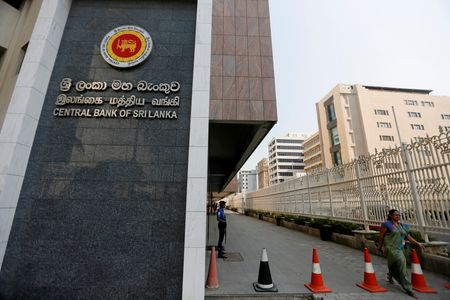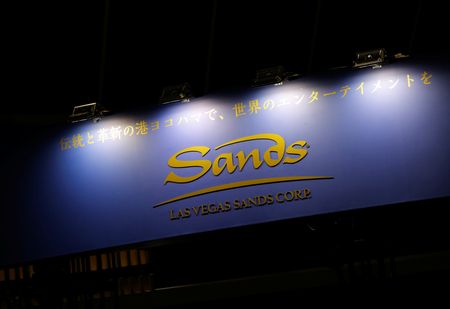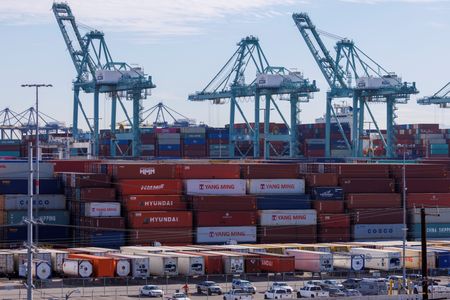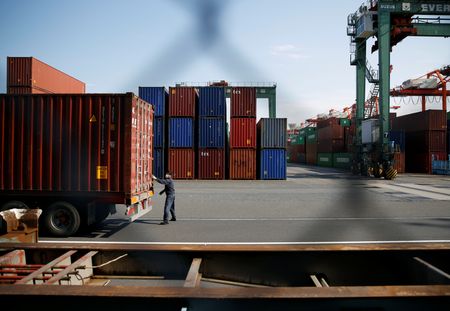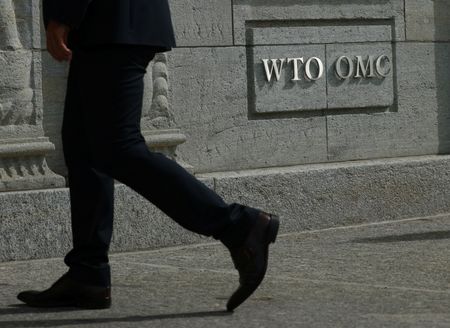By Uditha Jayasinghe
COLOMBO (Reuters) -Sri Lanka held its benchmark interest rate steady at 7.75% on Wednesday, but the central bank chief said further easing was possible as the island nation awaits the outcome of tariff talks with the U.S.
The decision was widely expected, with most analysts in a Reuters poll predicting a hold amid stable inflation and a steady economic recovery.
“There may be further room for easing but we will closely monitor developments and see if it is warranted,” Central Bank Governor P. Weerasinghe told reporters at a post-policy briefing in Colombo.
“We feel this monetary policy is appropriate and will steer inflation towards our 5% target.”
Supported by a $2.9 billion programme from the International Monetary Fund, the country is gradually recovering from its worst financial crisis in decades, triggered by a record dollar shortage three years ago.
The inflation rate was minus 0.6% in June but the central bank expects it to turn positive this quarter, ending almost a year of deflation.
The Central Bank of Sri Lanka (CBSL) had trimmed its benchmark interest rate by 25 basis points in May in a surprise move to support growth.
The economy expanded 5% in 2024, and Weerasinghe said growth will be above 3% this year.
“If the recovery in headline and core inflation remains gradual, there can still be space for another 25 bps cut in the rest of the year,” said Thilina Panduwawala, head of research at Frontier Research.
Ten of 13 analysts and economists polled by Reuters had expected the CBSL to hold rates steady at its July meeting, citing benign inflation, stable growth, and uncertainty over U.S. trade policy.
The United States initially imposed 44% tariffs on Sri Lankan goods but lowered them to 30% earlier this month.
Colombo resumed talks with Washington last week in a bid to reduce the duties further before they take effect on August 1.
Apparel, Sri Lanka’s second-largest foreign exchange earner, is particularly exposed — the sector exports 40% of its output to the U.S. and brought in $4.8 billion last year. It employs around 300,000 people, most of them women.
(Reporting by Uditha Jayasinghe; Editing by Swati Bhat, Jacqueline Wong and Kim Coghill)

